Friday, January 31st 2020

ASUS Revises RX 5700-series TUF Gaming with Axial Tech Fans and New Heatsink Underneath
ASUS today rolled out the TUG Gaming X3 Radeon RX 5700-series EVO graphics cards. These include the SKUs "TUF 3-RX5700-O8G-EVO-GAMING" for the RX 5700, and "TUF 3-RX5700XT-O8G-EVO-GAMING" for the RX 5700 XT. The two cards feature certain design tweaks over the original TUF Gaming RX 5700-series graphics cards that were criticized by tech reviewers for bad cooling performance. The updated TUF Gaming EVO cards feature an entirely different aluminium fin-stack heatsink from the one in the original TUF Gaming cards, which offers better contact with the various hot components on the PCB.
ASUS also updated the ventilation of the cooler, with three Axial-Tech fans replacing the conventional fans on the original. These fans feature impellers that are webbed at the edges, so air is guided axially (through the heatsink), and some of it isn't bled laterally. The fan in the center is slightly smaller than the ones on its sides. Clock speeds are unchanged between the two revisions, with up to 1720 MHz game clocks and up to 1750 MHz boost clocks for the RX 5700 model, and up to 1795 game clocks and up to 1905 MHz boost clocks for the RX 5700 XT model. Both cards feature a software-based "OC mode" that dials up clock-speeds by roughly 70 MHz. ASUS will replace the original TUF Gaming with the new EVO cards at current prices.
ASUS also updated the ventilation of the cooler, with three Axial-Tech fans replacing the conventional fans on the original. These fans feature impellers that are webbed at the edges, so air is guided axially (through the heatsink), and some of it isn't bled laterally. The fan in the center is slightly smaller than the ones on its sides. Clock speeds are unchanged between the two revisions, with up to 1720 MHz game clocks and up to 1750 MHz boost clocks for the RX 5700 model, and up to 1795 game clocks and up to 1905 MHz boost clocks for the RX 5700 XT model. Both cards feature a software-based "OC mode" that dials up clock-speeds by roughly 70 MHz. ASUS will replace the original TUF Gaming with the new EVO cards at current prices.
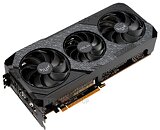
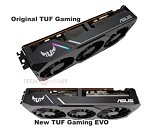
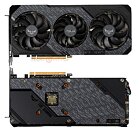
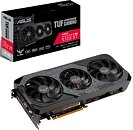
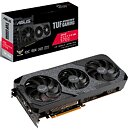
27 Comments on ASUS Revises RX 5700-series TUF Gaming with Axial Tech Fans and New Heatsink Underneath
Embarassing. Pretty much pro-AMD sentiment or linux users hoping to justify a purchase via mesa
CUDA is nvidia proprietary, not sure why you would expect it on an AMD card.
VRR? You know Freesync has been a thing for years, right?To be fair, Navi has had driver stability issues, and the stuttering and freesync problems are still an issue 6+ months after launch. AMD was doing really well for a while there, but their team fell assleep at the wheel onc ethey had ironed out all of GCNs bugs and dropped the ball on navi. It not as bad as he claims, but Navi isnt as stable as GCN releases were the last few years, and it is negatively reflecting on RTG.
I want to go big Navi but just like you I'd rather wait. The release of Big Navi has nothing to do with NV future releases. NV has it's own plan of new GPUs etc. Besides big navi, RDNA2 is going to be different than RDNA. Maybe this NAVI is a trial run? Eliminate problems and see how it goes? Some sort of test before big navi. I don't know but it would seem so. I can tell for sure you put everything into one basket.
Here's hoping they consider just using that newer fan design across all their card stack, both AMD and NVIDIA (and Intel if/when they get a working GPU out), now that they've ported the fan design over from the Matrix.
AMD already has those issues officially documented, which makes it a global (but not consistent) issue. It happens to a significant part of the Navi community, just not to the majority/everyone.
If they can bring out a big Navi that can beat a 2080 Super (or the 2080 Ti), I'll most likely get it.
they had two more premium boxes with 2080s and adviced for the streamers to use those in case of that.
but other than that, no issues :)
when I see EVO, I think half length cards
This is polar opposite to what is happening on the CPU side where AMD is leading and Intel is playing catchup.
Pretty sure some vendors are to blame for the "issues," being way too agressive with the voltages at idle. I wish i had more evidence to support this, but it seems plausible.
www.amazon.ca/Sapphire-11293-03-40G-Radeon-Nitro-Graphics/dp/B07XMNGVVD/ref=sr_1_6?keywords=5700XT&qid=1580732684&sr=8-6
It is so easy for people to forget that AMD is a CPU/GPU company and Nvidia is a GPU only company. Navi is actually commendable for what it is considering the 1080Ti is only slower than the 2080 Super and 2080TI.
Does not seem to stop them making great products on time on the CPU side. By your argument they should also be late at the CPU side.